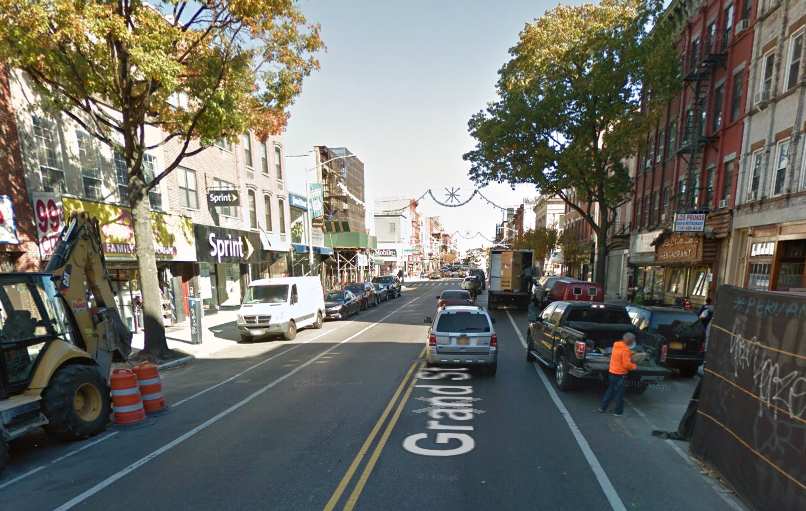On Tuesday, a dump truck driver with a suspended license struck and critically injured a 32-year-old man biking at the intersection of Grand Street and Bushwick Avenue. It wasn't the first serious traffic injury on Grand Street this year, and with no DOT plan for safety improvements on the horizon, it probably won't be the last.
So far in 2017, drivers have injured ten cyclists and eight pedestrians on Grand Street, which extends between the Brooklyn-Queens Expressway and Newtown Creek. In January, 45-year-old Ihosvany Olive struck and killed 85-year-old Rafael Nieves near Lorimer Street.
Nieves was the third person killed on Grand Street since the beginning of 2016. Drivers also fatally wounded Dominica Gonzalez, 71, at Union Avenue, and Matthew von Ohlen, 35, near Manhattan Avenue. Going back to 2009, drivers have killed six people on Grand Street -- four pedestrians and two cyclists, according to DOT collision data.
In the aftermath of von Ohlen's death, Council Member Antonio Reynoso and Brooklyn Community Board 1 called on DOT to study a protected bike lane for Grand Street. "We should be making a plan now to best prioritize bus, bike, and pedestrian travel that gives community residents the opportunity to move safely and efficiently," Reynoso wrote to the agency a year ago [PDF].
After Nieves was killed, an agency spokesperson told DNAinfo that a "safety action plan" for the street was in the works, and would be presented to CB 1 in the spring. Almost nine months later, no plan has been presented. The only visible action by the city on Grand Street has been NYPD's clumsy ticket stings of people on bikes.
Grand Street also figures to be a critical corridor during the L train shutdown. Reynoso and Transportation Alternatives have called on the city to reserve Grand Street for transit, biking, and walking while the L train is out of commission.
DOT and MTA are expected to release their L train transit service plan next month, and it's possible that any safety improvements in store for Grand Street will be part of that. But Tuesday's collision was an alarming reminder that the longer DOT waits to take action, the more people who live and work around Grand Street are exposed to dangerous conditions.
One model for Grand Street could be the recent redesign of Jay Street in downtown Brooklyn, where DOT was able to make room for parking-protected bike lanes. Like Jay Street, Grand is a bus route and a truck route. Jay is two feet wider than Grand.
More options open up if the city is willing to repurpose a parking lane to make room for safe bike lanes. Metered spots could be added to side streets to make up for the loss on Grand. Reconfiguring parking and deliveries on Grand may be challenging, but if that's what's necessary to prevent serious injuries and loss of life, those are steps a Vision Zero city should be willing to take.






